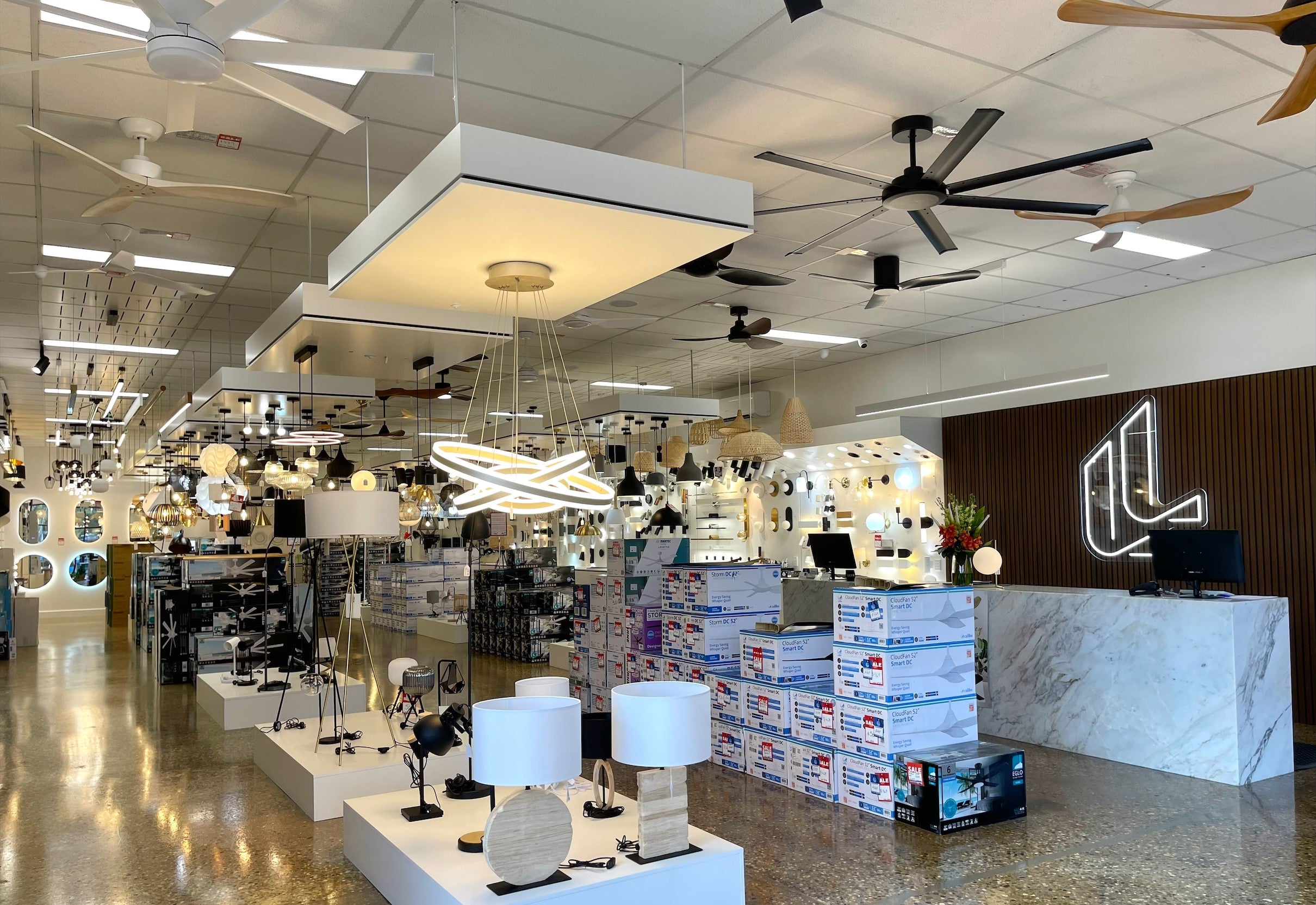Discover Top Lighting Store Melbourne for Your Home Décor Needs
Discover Top Lighting Store Melbourne for Your Home Décor Needs
Blog Article
The Ultimate Overview to Choosing Energy-Efficient Lighting Options

Understanding Energy-Efficient Lighting Technologies
When taking into consideration energy-efficient lighting choices, it is essential to understand the various technologies readily available in the marketplace today. LED (Light Sending out Diode) illumination sticks out as a popular selection due to its high power effectiveness and lengthy life-span contrasted to conventional incandescent or fluorescent bulbs. LEDs eat dramatically much less energy, give off less warmth, and have a much more prolonged operational life, making them a environmentally friendly and cost-efficient alternative. Another technology to take into consideration is CFL (Compact Fluorescent Lamp) lights, which is a lot more energy-efficient than incandescent bulbs but less so than LEDs. CFLs are recognized for their brilliant light output and relatively lengthy lifespan. Additionally, halogen incandescent bulbs use enhanced energy efficiency and life expectancy compared to conventional incandescent light bulbs. Comprehending the differences in these illumination innovations can help consumers make informed decisions based upon their specific demands, spending plan, and ecological considerations. It is important to consider factors such as power efficiency, life expectancy, light high quality, and initial price when selecting one of the most appropriate energy-efficient illumination modern technology for a specific application.
Calculating Energy Cost Savings Prospective
To examine the prospective energy savings achievable with the fostering of energy-efficient lights technologies, it is critical to conduct complete calculations based upon factors such as energy consumption, operational hours, and the details characteristics of the lighting options being considered. lighting store melbourne. Calculating energy cost savings potential involves determining the current power intake of existing lights systems and contrasting it to the forecasted energy intake of the energy-efficient alternatives under consideration. This contrast permits a clear estimate of the possible energy savings that can be realized
Operational hours play a critical role in these calculations, as lighting systems that are made use of for prolonged periods will certainly benefit extra from energy-efficient choices. Additionally, thinking about the details features of various lighting modern technologies, such as lumens per watt and lifespan, is necessary for precisely predicting power cost savings.
## Factors to Consider When Picking Illumination
Consider these crucial variables when picking illumination choices for optimum energy efficiency and efficiency. Recognizing the objective of the illumination will certainly help establish the most ideal components and bulbs for the area.
Secondly, consider the power performance of the lights options. Search for components and light bulbs with high visit this page lumens per watt (lm/W) rankings to make certain maximum light result with marginal energy usage. LED lights, for instance, is recognized for its energy performance and lengthy lifespan compared to traditional incandescent or fluorescent alternatives.
Additionally, assess the maintenance demands of the illumination fixtures. Choose fixtures that are simple to clean and maintain to ensure regular efficiency with time. Picking sturdy components that require minimal upkeep can help in reducing lasting upkeep expenses and guarantee the illumination system runs successfully.
Finally, think about the environmental influence of the lights alternatives. Select fixtures and bulbs that are energy-efficient and environmentally pleasant, such as those with recyclable elements or reduced carbon discharges. By prioritizing sustainability in your lights options, you can add to a greener future while enjoying the advantages of energy-efficient lighting options.

Comparison of Various Lighting Options
In analyzing the factors affecting lighting choice for power efficiency and efficiency, it becomes imperative to compare the numerous lights alternatives offered in the marketplace. LED lighting sticks out as one of one of the most energy-efficient selections as a result of its long life expectancy and reduced power intake. LEDs are functional, providing a variety of shade temperature levels and dimming capabilities, making them ideal for various settings. Furthermore, portable fluorescent lights (CFLs) give an even more energy-efficient alternative to conventional incandescent bulbs, although they include little quantities of mercury. Halogen incandescent light bulbs supply improved energy performance compared to standard incandescent light bulbs, yet they are much less reliable than CFLs and leds. Another choice to take into consideration is fluorescent tubes, her response commonly used in commercial and industrial setups as a result of their high performance and long life. When comparing illumination choices, aspects such as energy efficiency, lifespan, color temperature level, and ecological influence should be carefully considered to make a notified decision based on specific lights requirements and concerns.
Tips for Applying Energy-Efficient Illumination
When looking to improve energy efficiency through illumination choices, carrying out strategic lights controls can considerably decrease power intake. One efficient pointer for executing energy-efficient illumination is to utilize occupancy sensors. These sensors find activity within a room and instantly turn lights on or off, making sure that lights are only in operation when required. In addition, daylight sensors can be incorporated to readjust illumination degrees based upon natural light accessibility, more enhancing power use.
Lowering lights not only produces ambiance and versatility in illumination degrees yet additionally helps conserve energy by decreasing the quantity of power taken in. Selecting energy-efficient light bulbs such as CFLs or leds can make a substantial difference in energy cost savings.
Final Thought
In verdict, picking energy-efficient lighting alternatives is crucial for decreasing energy consumption and costs. Carrying out energy-efficient illumination not only profits the atmosphere however also leads to lasting cost savings and boosted lights quality.
To evaluate the useful site prospective power savings attainable via the adoption of energy-efficient lights modern technologies, it is critical to perform thorough estimations based on elements such as energy consumption, operational hours, and the details attributes of the lighting options being taken into consideration (lighting store melbourne).In examining the elements affecting lights option for energy efficiency and performance, it becomes critical to contrast the numerous lights choices readily available in the market. When comparing illumination choices, aspects such as energy efficiency, life expectancy, color temperature level, and ecological effect must be thoroughly considered to make a notified choice based on details lighting needs and concerns
When looking to improve power effectiveness via illumination options, implementing critical lights controls can considerably minimize energy consumption. Executing energy-efficient lighting not only profits the environment however also leads to long-term price financial savings and improved lighting top quality.
Report this page